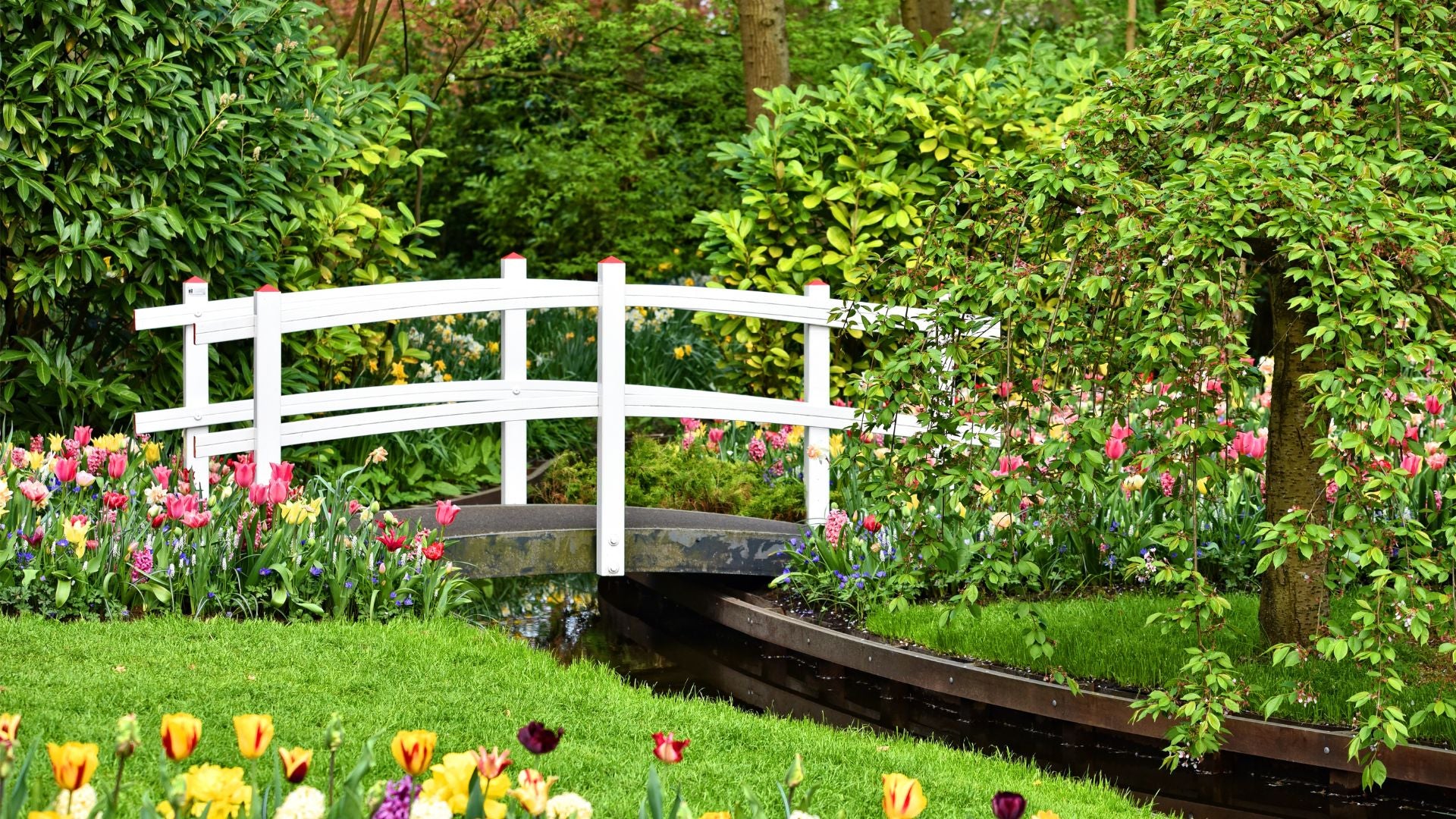Gardening is a beloved Australian pastime, with people across the country turning to their gardens to unwind and enrich their lives. However, a report from the Department of Agriculture, Fisheries, and Forestry underscores a critical responsibility that comes with this hobby: maintaining biosecurity. Plant pests, weeds, and diseases can easily spread from even the smallest garden, posing significant threats to Australia’s agricultural industries and native environments.
This highlights the importance of cultivating healthy plants and designing a cohesive garden theme that supports a balanced ecosystem. A well-thought-out garden theme does more than enhance the visual appeal of your outdoor space; it creates a harmonious environment that invites relaxation and enjoyment while promoting responsible gardening practices.
As you embark on the journey of designing your garden, it’s essential to consider various aspects, including your chosen style, plant selection, and decor, all of which contribute to a cohesive and impactful garden theme.
Selecting the Right Garden Style
Selecting the right garden style is crucial for creating an outdoor space that reflects your personal taste and complements your home’s architecture. Here’s how to choose a garden style that suits your needs.

Exploring Popular Garden Styles
Several garden styles are to be considered, each with its own unique charm. A cottage garden embraces a whimsical and informal layout filled with vibrant flowers and rustic elements.
Japanese gardens focus on serenity, using water features, stones, and carefully pruned plants to create a tranquil space. For those seeking a sun-soaked escape, a Mediterranean garden incorporates drought-tolerant plants, terracotta pots, and warm, earthy tones. If you prefer clean lines and modern aesthetics, a contemporary garden offers minimalistic design, often featuring geometric shapes, sleek materials, and a restrained plant palette.
Matching the Style to Your Home
When selecting a garden style, it’s essential to consider how it will harmonise with your home’s architectural features. For example, a traditional cottage garden pairs beautifully with older, heritage-style homes, while a contemporary garden might be better suited to a modern residence.
Pay attention to materials and colours already present in your home’s exterior and outdoor structures, ensuring your garden style complements these elements rather than clashes with them.
Considering Climate and Local Flora
Your garden style should also be practical for the local climate and support native plants. A Mediterranean garden, for instance, is ideal for Australia’s hot, dry regions, whereas a Japanese garden might require more moisture and shade.
Choose a style that allows you to incorporate native flora, which is better adapted to your area and more sustainable in the long run.
III. Plant Selection: The Backbone of Your Garden Theme
Plant selection is the backbone of any garden theme, playing a pivotal role in establishing and maintaining a cohesive outdoor space. The right plants can bring your chosen style to life and ensure it thrives throughout the year.
Choosing Plants that Align with Your Theme
When selecting plants, it’s crucial to choose varieties that align with your garden’s theme. Consider colour schemes, textures, and plant types that complement your chosen style. For example, a cottage garden might feature a mix of colourful perennials like roses and lavender alongside climbing vines and soft, billowy grasses.
A Japanese garden, on the other hand, would prioritise the use of evergreens, bamboo, and maples, focusing on subtle hues of green and the texture of foliage. In a Mediterranean garden, opt for hardy, drought-tolerant plants such as olive trees, rosemary, and lavender, which provide the silvery greens and purples characteristic of this style.
Considering Seasonal Variations
Consider seasonal variations to maintain a consistent garden theme throughout the year. Select a mix of plants that offer visual interest in different seasons, ensuring your garden remains vibrant and true to its theme year-round.
For instance, incorporating deciduous trees in a contemporary garden can provide a striking display of autumn colour, while evergreen shrubs maintain structure during winter.
Native Plants and Sustainability
Incorporating native plants is not only sustainable but also ensures ease of maintenance. Native species are better adapted to the local climate and soil conditions, making them more resilient and requiring less water and fertiliser.
By carefully selecting native plants that fit your garden theme, you can create a beautiful, cohesive space that is both environmentally friendly and easier to care for.
IV. The Role of Garden Decor in Enhancing Your Theme

Selecting Appropriate Garden Features
When choosing garden decor, it’s important to select features that align with your garden style. For example, in a Japanese garden, minimalist stone lanterns and bamboo water features can enhance the tranquil atmosphere.
A cottage garden might benefit from rustic wooden benches, vintage bird baths, or wrought-iron trellises that complement the informal and romantic style. For a contemporary garden, sleek and modern sculptures or geometric planters can emphasise clean lines and simplicity.
The key is to choose decor items that integrate seamlessly with the garden’s overall theme, enhancing rather than distracting from the natural beauty of the space.
Creating Focal Points
Garden decor can also be used strategically to create focal points within your garden. These focal points draw the eye and add structure to the landscape, guiding the viewer’s gaze through the space.
In a Mediterranean garden, a central water fountain or a large terracotta urn could serve as a striking focal point, while in a contemporary garden, a bold sculpture or a grouping of statement planters might be more appropriate.
Lighting and Ambiance
Lighting is another crucial element in garden decor, playing a significant role in setting the mood and highlighting key areas. Soft, warm lighting can create a welcoming and intimate atmosphere, perfect for a cottage garden or Mediterranean garden.
In contrast, sleek, modern lighting fixtures can enhance the minimalist vibe of a contemporary garden, while strategically placed lanterns in a Japanese garden can add to its serene ambience.
V. Designing Pathways and Layouts for Flow and Functionality
Designing pathways and layouts is crucial for creating a garden that not only looks beautiful but is also functional and easy to navigate. A well-planned layout and thoughtfully chosen materials can enhance the overall theme and provide a seamless experience for anyone spending time in the garden.
Pathway Materials and Styles
The choice of pathway materials plays a significant role in complementing your garden’s style. Gravel paths lend a rustic, informal feel to a cottage garden, while stone or slate pathways suit a Japanese garden with their natural, organic appearance.
Brick pathways are ideal for a Mediterranean garden, adding warmth and texture, while contemporary gardens can benefit from sleek, concrete or paved paths that echo the clean lines of the overall design. Durability and ease of maintenance are also key considerations, ensuring that your pathways remain functional and attractive over time.
Creating a Natural Flow
Pathways should guide visitors through your garden naturally, enhancing the theme and encouraging exploration. Curved paths can create a sense of mystery and discovery in a cottage or Japanese garden, while straight, geometric paths in a contemporary garden might lead directly to focal points, reinforcing the modern aesthetic.
The goal is to create a route that feels intuitive, drawing people towards the most beautiful and interesting parts of the garden.
Zoning and Layout Considerations
Effective zoning is essential for a balanced garden layout. Designate specific areas for different functions, such as seating areas, flower beds, or vegetable patches.
In a Mediterranean garden, for instance, a central seating area surrounded by aromatic herbs and flowers could create a welcoming focal point, while a contemporary garden might feature distinct zones for relaxation, dining, and ornamental plants, ensuring each area serves its purpose without disrupting the garden’s overall harmony.
VI. Maintaining Consistency: The Key to a Cohesive Garden

Maintaining consistency is crucial for ensuring that your garden theme remains cohesive and visually appealing over time. Regular maintenance is key to this effort; pruning, weeding, and cleaning help keep your garden tidy and true to its design.
Consistent garden design also involves knowing when to update or refresh elements. As seasons change or your garden matures, consider adjusting plant selections and decor to stay aligned with your chosen theme. For example, you might swap out seasonal flowers or replace aged garden furniture with pieces that better match your aesthetic.
Avoid common pitfalls like over-cluttering with decor or mixing too many styles, as these can disrupt the cohesion of your garden. Stick to a clear vision, and make thoughtful choices that reinforce your theme.
By focusing on maintaining your garden theme through regular care and strategic updates, you’ll create a space that remains harmonious and inviting year after year.
Achieve Your Dream Garden with Professional Help
Creating a cohesive garden theme can be a daunting task, but hiring a professional can make the process smoother and more enjoyable. One of the main benefits of working with a garden design expert is their specialised knowledge.
Professionals understand the intricacies of plant selection, layout design, and decor choices, ensuring that every element of your garden works harmoniously together. This expertise not only saves you time but also helps you achieve a polished final look that might be difficult to accomplish on your own.
Another advantage is the ability to receive customised garden solutions. Professionals can tailor the design to your personal preferences and the specific characteristics of your outdoor space. Whether your garden is small or large, shady or sun-filled, a professional can create a cohesive theme that perfectly reflects your style while maximising the functionality of the space.
At Garden Depot, we offer comprehensive garden decor services to help you bring your vision to life. Our team of experts is ready to assist you in designing a garden that is not only beautiful but also practical and sustainable. Contact Garden Depot today to take the first step toward creating your dream garden.

